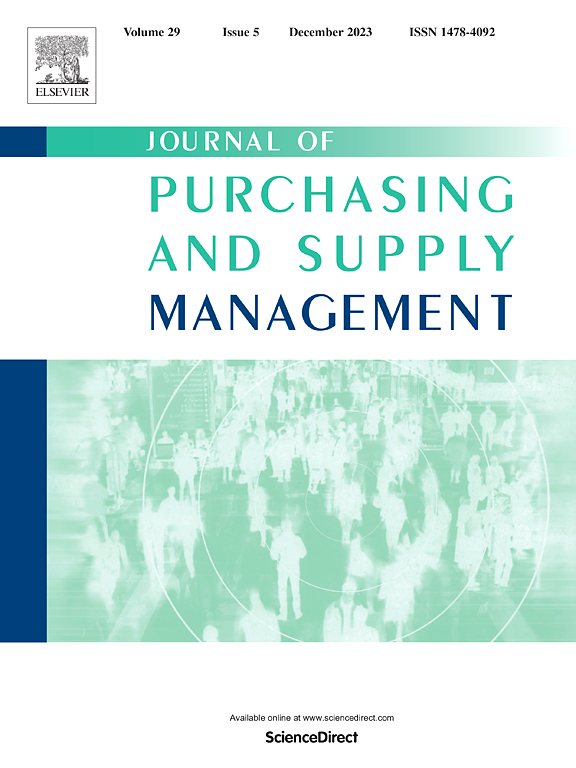准备好再次飞跃了吗?为四分体辩护
IF 8.7
2区 管理学
Q1 MANAGEMENT
引用次数: 0
摘要
与三元组相比,四元组更有利于研究供应网络的动态性质。例如,平衡理论假设三元结构中存在平衡,而事实上,网络中的关系不断变化。Tetrads帮助我们研究网络是如何嵌入更大的网络中的,派系或子团体是如何在网络中运作的,以及强关系和弱关系在网络中的表现。本文章由计算机程序翻译,如有差异,请以英文原文为准。
Ready for another leap? Making a case for tetrads
Tetrads are more conducive to studying the dynamic nature of supply networks compared to triads. For instance, the balance theory assumes there is equilibrium in the triadic structure when, in fact, relationships are constantly in flux in networks. Tetrads help us examine how a network is embedded in a larger network, how factions or subgroups operate in networks, and how strong and weak ties play out in a network.
求助全文
通过发布文献求助,成功后即可免费获取论文全文。
去求助
来源期刊

Journal of Purchasing and Supply Management
MANAGEMENT-
CiteScore
10.30
自引率
18.00%
发文量
31
审稿时长
70 days
期刊介绍:
The mission of the Journal of Purchasing & Supply Management is to publish original, high-quality research within the field of purchasing and supply management (PSM). Articles should have a significant impact on PSM theory and practice. The Journal ensures that high quality research is collected and disseminated widely to both academics and practitioners, and provides a forum for debate. It covers all subjects relating to the purchase and supply of goods and services in industry, commerce, local, national, and regional government, health and transportation.
 求助内容:
求助内容: 应助结果提醒方式:
应助结果提醒方式:


